The ASRock Fatal1ty X299 Professional Gaming i9 Motherboard Review
by Joe Shields on September 26, 2017 8:00 AM EST- Posted in
- Motherboards
- Gaming
- Intel
- ASRock
- SLI
- Fatal1ty
- CrossFire
- X299
- Skylake-X
- Kaby Lake-X
ASRock X299 Gaming i9 BIOS
The ASRock UEFI BIOS for X299 is similar to past iterations in look and overall feel. By default, due to the 'professional' nature of this board, users are greeted by the 'Advanced Mode', which allows more options and flexibility than Easy Mode. Pressing F6 toggles between the modes.
In Easy mode, the screen shares high-level information including the type of CPU installed, DRAM information, storage configuration, fan status, temperatures of the CPU, motherboard, and CPU voltage (it reads input voltage), boot priority, BIOS flashing, and FAN-Tastic Tuning.
While editing more advanced features are saved for advanced mode, some items are configurable here. For example, XMP profiles can be enabled, and configuring a RAID mode can be changed with a click of a button on-screen. There are tools for flashing the BIOS, changing pre-configured fan profiles, and changing the boot priority are all editable functions in Easy Mode. Any other adjustments will have to be made in Advanced Mode.
Jumping into advanced mode provides a way to see and edit a lot more items from the BIOS. The Fatal1ty themed UEFI is mostly black and red with the text in white. Across the top is a menu consisting of several sections: Main, Overclock Tweaker, Advanced, Tool, H/W Monitor, Security, Boot, and Exit. The default landing page is the Main screen. Not terribly informative, but it shows the UEFI version, processor statistics, as well as the populated memory slots. From this screen we are able to access My Favorites, which can be populated with the UEFI options of choice by pressing F5.
The OC Tweaker section is where overclocking options for the CPU, DRAM, Voltage, and FIVR are found. The CPU Configuration section shows options for adjusting the CPU Ratio, BCLK, Mesh, and a slew of other CPU related options which will remain unused for most users. In the DRAM section the user can enable XMP, change the memory multiplier, and have access to adjust the four major timings, as well as dozens of secondary and tertiary timings. The Voltage Configuration selection is where major voltage options such as CPU Input Voltage (input voltage for the IVR), CPU Load-Line Calibration, System Agent and I/O voltage for the memory controller, and voltage for each pair of DRAM channels can be edited. Last, the FIVR configuration gives control over the main voltage heading into the processor (which then separates it into lower voltages for each clock domain). Items like the Vcore voltage mode, CPU Mesh voltage, and other offsets are found here.
If one touch overclocking is your thing, ASRock offers this with the Load Optimzed CPU OC Setting. For the 7900X installed there are options for Turbo 4.2 GHz, 4.4 GHz, 4.6 Ghz, and 4.8 GHz. In a nutshell it takes all cores and overclocks them at the same speed, bypassing normal turbo functions. It did use slightly more voltage than needed when compared to manual overclocking at the 4.4 GHz setting, but otherwise it was stable and worked fine.
The Advanced section of the X299 Professional Gaming i9 is a list of folders/sub-menus each having adjustable options to the subsystems of the motherboard. It offers control over the CPU and Chipset configurations, Storage, and USB among other options. The 'Tool' tab option lists several features, such as RGB LED to set the RGB lighting, an Easy RAID installer to quickly setup RAID arrays, as well as UEFI utilities for flashing the BIOS (via internet or local Instant Flash). It also has a function to securely backup the UEFI. The H/W Monitor screen shows live readings of temperature sensors, fan speeds and voltages. Moving down in this section allows for tweaking of the motherboard fan headers for fan and pump speeds.
Security, Boot, and Exit are fairly self-explanatory. If a password is needed required at the BIOS level, the Security section is where that can be set. The boot section covers exactly that, most anything that touches the boot process. From drive priority, to speed of the boot, to having, or not, a full screen logo on boot. The gallery below shows all the UEFI screens.
ASRock X299 Gaming i9 Software
The included driver DVD comes with all the drivers a user needs to get started. It also contains some Google freeware (Chrome and the Google Toolbar) on the main Drivers and Software page. Moving over to Utilities, this section includes the ASRock RGB LED, and the Sound Blaster Cinema 3 audio application. Last is the information tab, where owners will find links to soft copies of the user’s manual, quick installation guide, a RAID installation guide, and Intel RST guides.
ASRock App Store
Once the drivers are installed from the disk, a user can install the App Store application and confirm all drivers are up to date in the BIOS & Drivers tab. If they are not, the drivers can be updated by selecting the driver that isn’t and pressing the Update button. The Apps section is has software downloads for Sound Blaster Cinema 3, the RGB LED Utility, and some sponsored downloads for Norton Security and a couple of slot games.
F-Stream
If system monitoring and overclocking from within windows is the preferred method, ASRock has its F-Steam application. From within the program, there are three preset modes users can choose from: Performance, Standard (default), and Power Savings. These options manipulate power savings and turbo modes, but does not overclock. The OC Tweaker section has the necessary manual options from voltage control to BCLK and CPU ratio. The System Info section displays informative details on the CPU speed including BCLK and CPU ratio, fan speeds and temperatures, as well as voltages. Also included with F-Stream is their FAN-Tastic Tuning section where motherboard connected fans can have their fan curves adjusted from within windows.
ASRock RGB LED
The ASRock RGB LED application gives users the ability to change the color, style, and speed of the integrated LEDs under the PCH, or control of external RGB LEDs when attached to the two headers. It has several modes/styles to choose from as well as full control over the color with RGB sliders.
Sound Blaster Cinema 3
The Sound Blaster Cinema 3 software suite allows manipulation of the audio ecosystem. Users are able to control aspects of the surround sound implementation, bass boost, sound crystalizer, and dialog plus to tweak the sound to the user's preference. It has three different modes, music, movies, and games, for setting options within each type of playback situation.


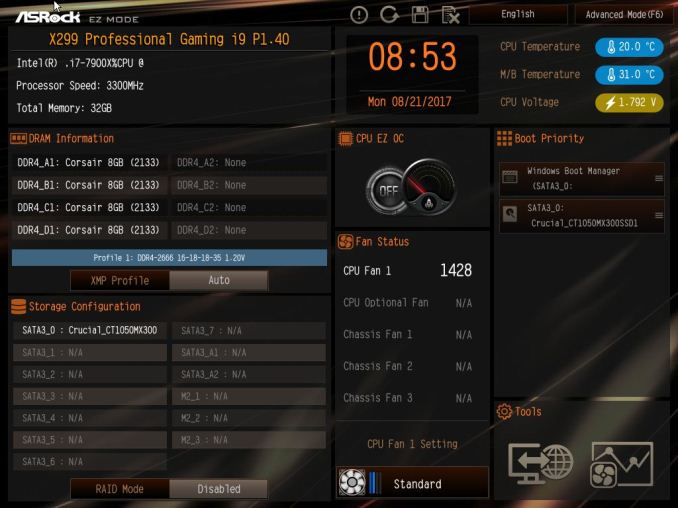
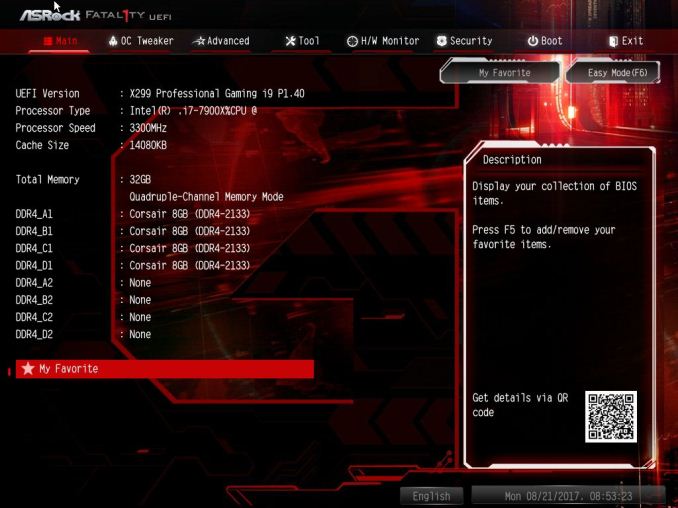
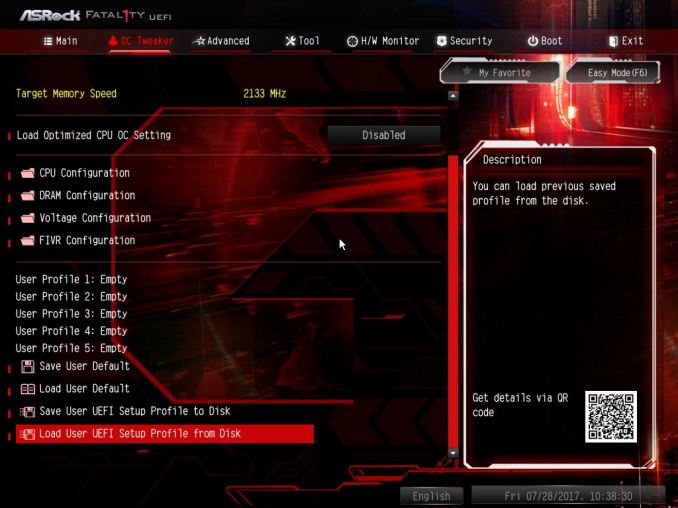
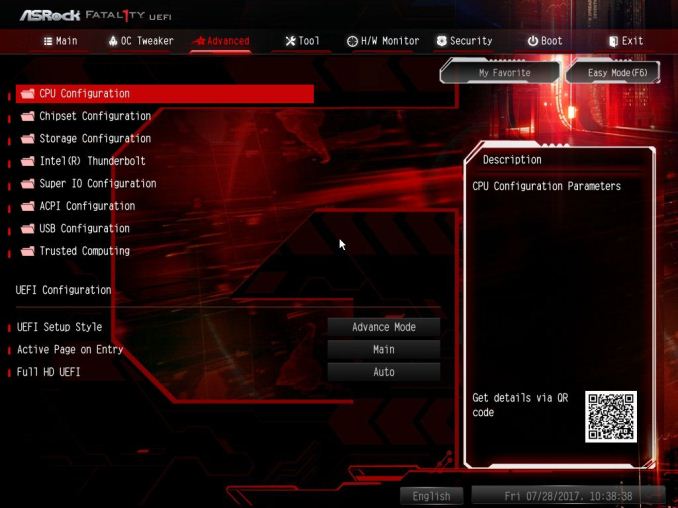
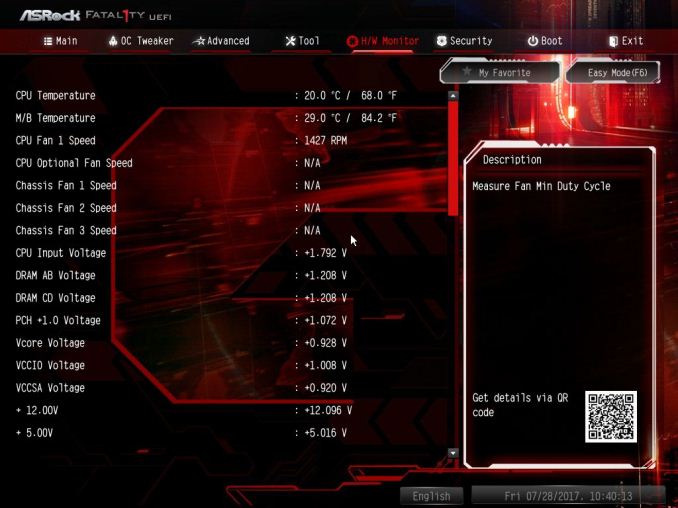






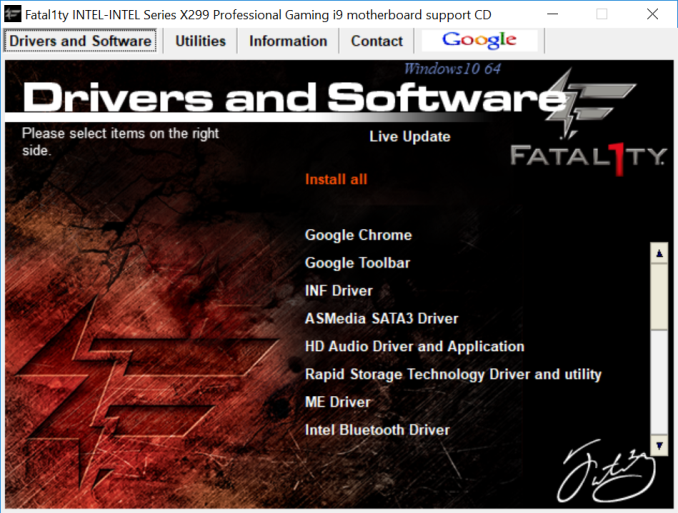
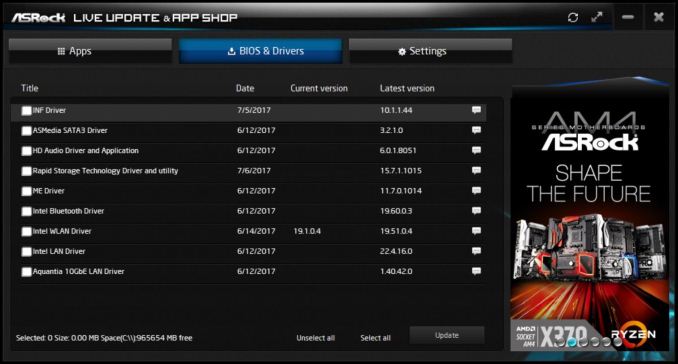
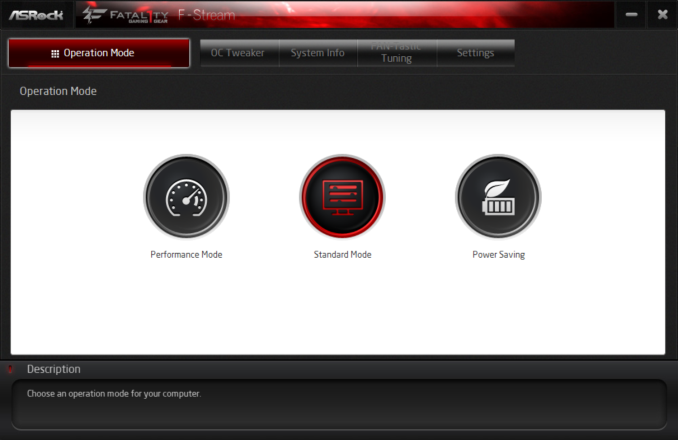
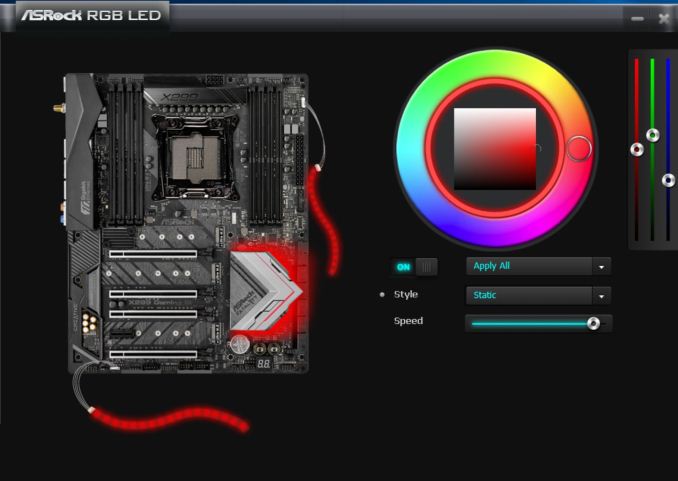
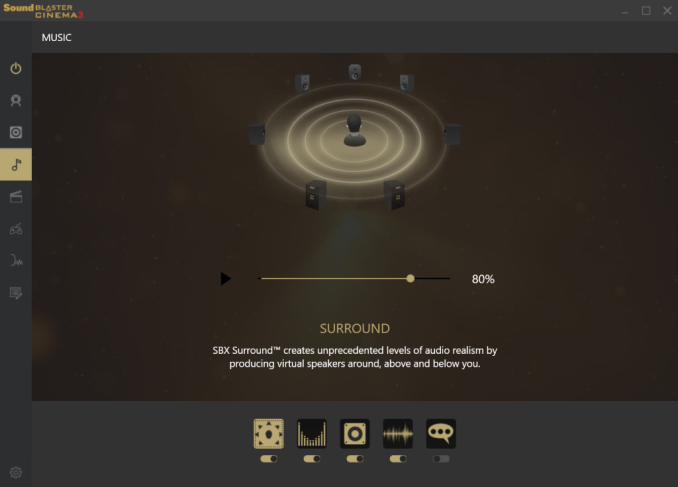














22 Comments
View All Comments
jardows2 - Tuesday, September 26, 2017 - link
I took the comment differently than you. I took it as being surprised that they didn't include a Killer NIC, not that the reviewer was disappointed in any way. It seems to be the standard practice of MB makers to give their "gaming" boards a more "awesomeness" by including the "much superior because of such a cool name" Killer NIC. Just a little bit surprised that AsRock didn't do it on this one.notR1CH - Wednesday, September 27, 2017 - link
Killer NICs are all software based too (except the very first proof of concept one with the ridiculous heatsink). Their software and drivers are trash compared to well established vendors like Intel. I actively avoid any motherboards integrating their hardware and I'm very surprised to see Anandtech in favor of them.BrokenCrayons - Tuesday, September 26, 2017 - link
"Curiously, for a motherboard which has "gaming" in the title and having three network ports, we were surprised not to see a Killer Network based NIC which finds its way on to several other gaming motherboards."I don't think that Killer NICs are a selling point these days. Rivet has a well-deserved, awful reputation for hocking what amounts to ethernet snake oil. Numerous times, I've seen people state that they will not purchase a particular product because a Killer NIC is present. ASRock probably made a good decision by omitting rather than including one.
Flunk - Tuesday, September 26, 2017 - link
You hit the rivet on the head there, most gamers don't want Killer Nics because of the poor software support and total lack of any advantage in performance. They'd rather have an Intel NIC that is rock solid.apoctwist - Wednesday, September 27, 2017 - link
Yeah. I have an ASRock X99X mobo and when I tried to use the Killer NIC my cpu usage was sitting at close to 60% on idle because the stupid software kept doing something. Luckily ASRock included a Intel NIC, moved to that and never looked back. I will never buy a mobo that has Killer NICs, period. So I'm glad ASRock is getting rid of that junk. Even more interesting is ASRock including Intel NICs on AMD's platform.samer1970 - Tuesday, September 26, 2017 - link
X299 +i9 is as stupid choice . people who choose 10+ cores want ECC support. and the new Turbo is more than enough for speed.people who want to overclock those cpu will go for the cheapest coming 6 cores i7 8700K ..
I dont know why intel is shooting itself in the foot .. intel enable ECC for i9 .. this needs no brain at all to figure out. unless your iq is zero
ddriver - Tuesday, September 26, 2017 - link
Intel was thinking about milking idiots.According to intel shills ECC is so unimportant, that intel feels the need to charge a 50% premium for an identical product that doesn't have ECC disabled.
But let's be honest, games need 10+ core products as much as they need ECC - not at all.
HEDT for gaming is simply idiocy. It is a waste. Intel's HEDT lineup however seems to be designed with one purpose in mind - milking idiots out of their money. So it all makes sense in a sad, sad way.
Do not be fooled by the high price, this is not a product for professionals, this is an expensive toy for losers with poor self esteem who need it to cultivate an illusion that it somehow makes up for their lack of redeeming qualities, even if all it does in reality is further prove their idiocy. Product value is not all that bad around 6-8 cores, albeit IO is abysmal, and of course, the lack of ECC support. But everything on top of that outta come with a certificate for idiocy, and for the 16 and 18 core versions, it should come in a massive, big frame too.
apoctwist - Wednesday, September 27, 2017 - link
No need for a certificate or frame. You can spot one of these idiots a mile away. They'll be covered in LEDs.samer1970 - Wednesday, September 27, 2017 - link
LOL ...True , Sadly all case manufacturers are going RGB led design to the point that I must get an older case each time I make a PC.
Tempered Glass and LED ... people forgot how important it is to shield their PC and the RGB is just for kids.
I miss already good designed PC cases ...
peevee - Wednesday, September 27, 2017 - link
"Professional Gaming"Up next: your mom's basement becomes "Professional Office".